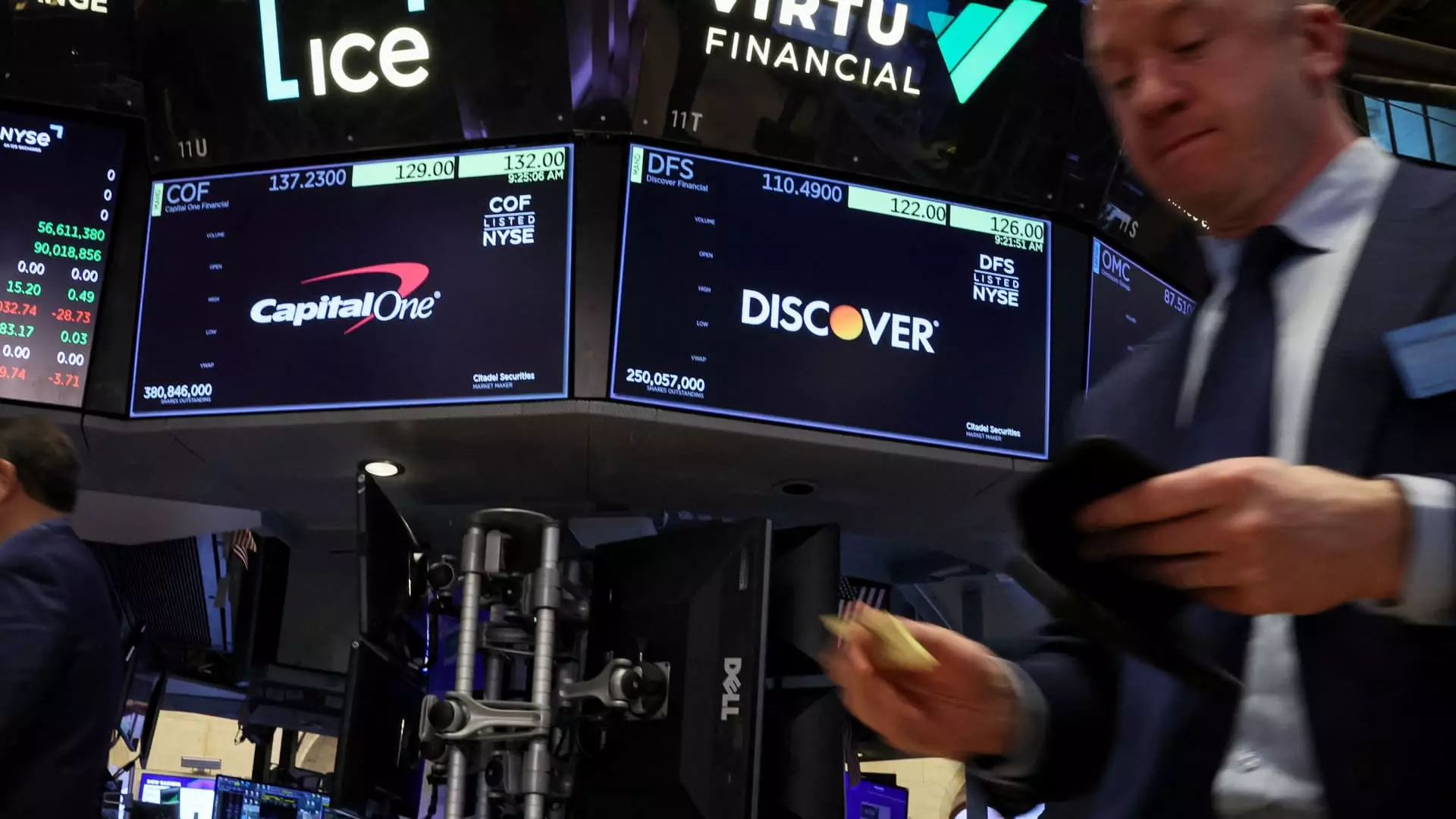Capital One’s recent $35 billion acquisition of Discover Financial represents more than just a financial maneuver; it symbolizes a significant shift in the regulatory landscape under the auspices of the Trump administration. The greenlight given by the Federal Reserve and the Office of the Comptroller of the Currency sends a resounding message to investors and the broader banking industry: we are entering a new era of less restrictive regulations. These approvals highlight a critical point: the current climate is conducive to major deals that could reshape the banking landscape.
This more lenient regulatory environment is a double-edged sword, however. While it opens the floodgates for mergers and acquisitions, one cannot help but wonder if this will lead to a lack of necessary oversight that protects consumers. It seems irresponsible to cheer for a system that could ultimately placate reckless behavior in major banking institutions. Regulation, when executed properly, is designed to uphold a level playing field. Yet, currently, this easing of rules may just embolden risky practices that could set the stage for future economic turmoil.
Strategic Growth Amidst Economic Uncertainty
From an investment perspective, the acquisition of Discover bolsters Capital One’s earnings potential while providing a buffer against macroeconomic uncertainties. In today’s unpredictable environment, it’s reassuring for shareholders to know that this deal creates a financial safety net, potentially cushioning them against unpredictable economic tides. Nevertheless, one must question the sustainability of this model. Is this merely a stopgap measure, or does it lay the groundwork for long-lasting stability?
This merger allows Capital One to diversify its portfolio and decrease its dependence on third-party networks like Mastercard and Visa. While that may sound promising, are we witnessing a return to oligopolistic scenarios where a handful of companies dominate the market? Consolidation in the banking sector has its merits, particularly in developing more robust financial products. Still, it raises pertinent questions about competition and innovation—the bedrock of a healthy market.
Investor Reactions and Market Impact
Investor sentiment around the acquisition has been mixed. The initial surge in Capital One’s stock was short-lived, drawing a cautionary line against overzealous optimism. Amid nervousness surrounding tariff policies and potential recessions, analysts forecasted a litmus test for broader market conditions. Indeed, while the short-term gains looked promising, the long-term implications of such acquisitions might not play out as favorably if macroeconomic issues remain unresolved.
In the midst of the market’s fluctuations, investment banks like Goldman Sachs have not been able to capitalize on the anticipated boom from a more open regulatory framework. The slowed deal activity highlights a significant disconnect; while Capital One’s acquisition may indicate a positive shift, it hasn’t translated across the board. Such inconsistency raises doubts about whether all players in the investment landscape will enjoy the benefits of this regulatory thaw.
The Bigger Picture of Banking Consolidation
Wells Fargo, another significant player in this transformative landscape, is hoping to see the lifting of the asset cap imposed due to past misdeeds. Charismatic leadership like that of CEO Charlie Scharf has improved operational efficacy, but the question lingers: at what cost? The hope that a more lenient regulatory regime will allow Wells to strengthen its investment banking footprint is shared by many. However, we shouldn’t ignore the potential fallout if these institutions become too big to fail or heedless of accountability.
This ongoing shift towards large-scale mergers and reduced regulatory oversight presents both opportunities and existential threats for the financial industry. On one hand, consolidation could bring about economies of scale and innovative solutions for consumers. On the other hand, it also risks entrenching a system that prioritizes growth and profit over ethical practices. As we look ahead, the imperative remains clear: how do we balance the ambitions of financial institutions with the due diligence necessary to protect consumers and maintain market integrity?
Future Outlook: The Onus on Leadership
As the dust settles around Capital One’s acquisition of Discover, all eyes are on whether this strategic move will serve as a bellwether for further consolidation. With the regulatory environment seemingly primed for change, the leadership of financial institutions must tread carefully. The future holds significant promise, but it also harbors risks that could lead to a system reminiscent of the pre-2008 financial crisis.
Investors must remain vigilant, discerning between genuine growth opportunities and shortsighted gambles made possible by lax regulations. The ultimate question revolves around the ethical responsibilities of these institutions: will they aim to innovate responsibly, or will they chase profits recklessly? Only time will tell how this narrative unfolds, but it is critical for observers and stakeholders to stay engaged in this evolving story, as it has ramifications that extend far beyond the boardroom.

